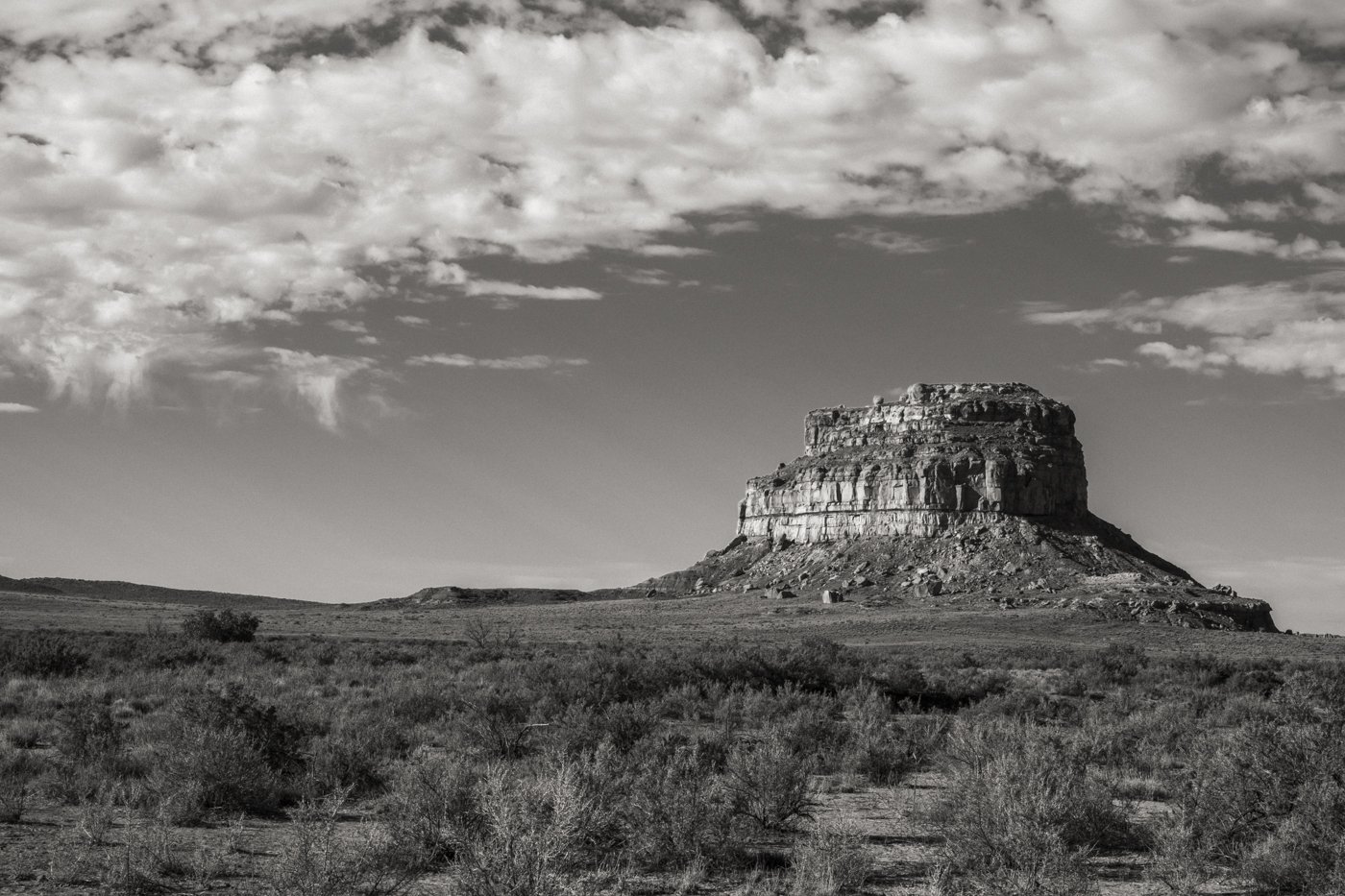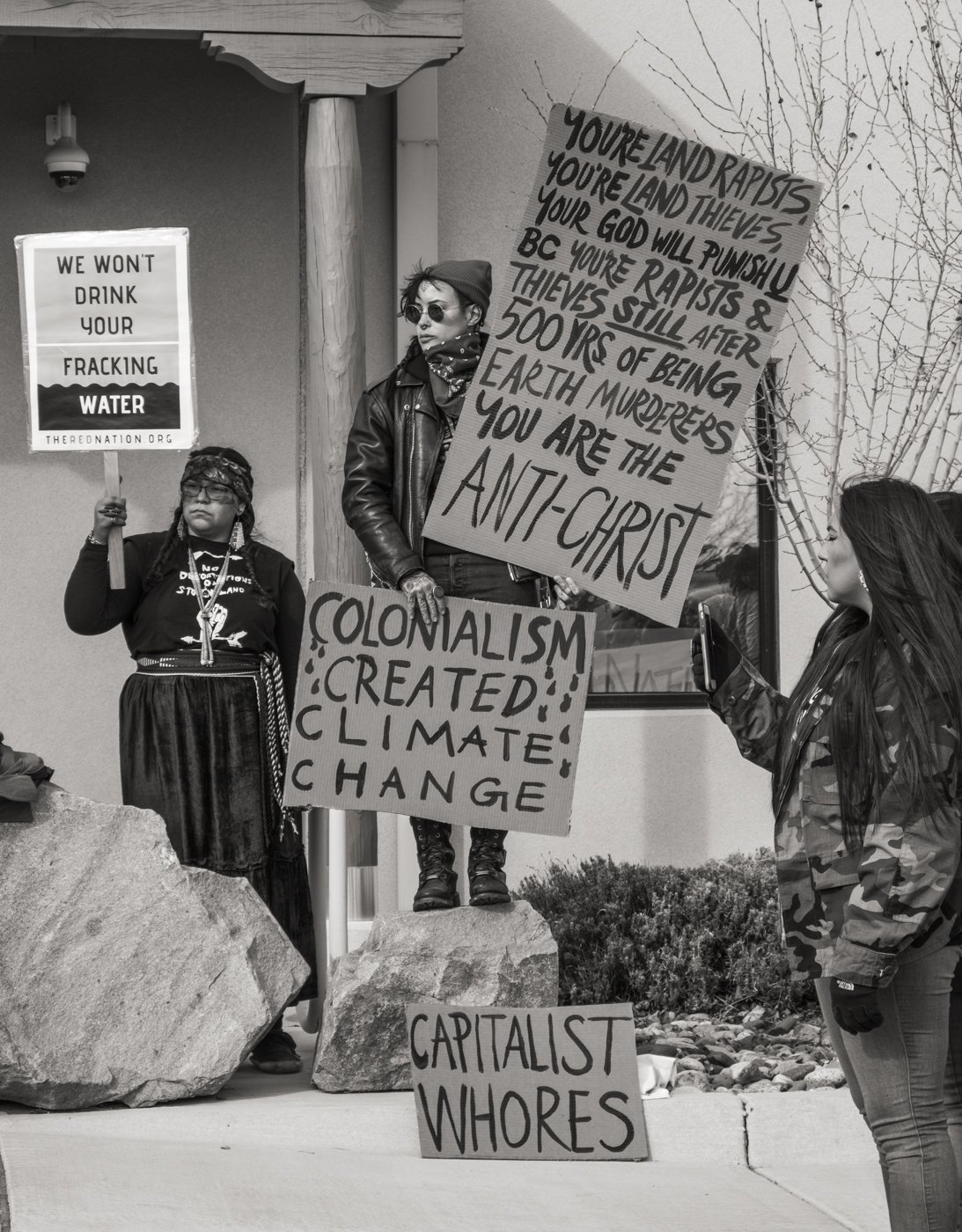




-
My project, “Chaco versus Fracking,” seeks to bring attention to the detrimental effects of fracking by energy developers on the cultural resources of Chaco Canyon and the Greater Chaco Area.
Chaco Canyon is an UNESCO world heritage site located in the San Juan Basin of northwestern New Mexico. The Chaco civilization reached its height between A. D. 850 and A.D. 1250. Exquisite masonry, architectural and engineering expertise and subterranean ceremonial kivas define the Chaco tradition.
Since 1969, I have made many trips to the area. In recent years, however, I am shocked to see that oil and gas rigs scar the Chaco landscape. Pipelines penetrate land containing cultural treasures, flares send methane into the air and dirt rises from narrow roadways ravaged by heavy equipment.
As a National Historical Park, Chaco Canyon is protected from encroachment. In addition, the “Honoring Chaco Initiative“ recently launched by the United States Secretary of the Interior, may result in a protective ten mile buffer around the park. Nevertheless, Chaco Canyon, is only the core of a magnificent wide-spreading culture. More than 400 miles of ancient roads radiate out from the canyon connecting hundreds of outlying Chaco communities.
I am a former archeologist who cares deeply about Chaco’s outstanding cultural resources. As an advocate for their protection, I have created a series of diptychs that highlights the incompatibility between Chaco’s greatness and the destructive effects of fracking. Through the exposure that Review Santa Fe offers, I hope to find a audience for my project comprised, in particular, of cultural preservationist, developers and the policy makers who are in a position to achieve protection for the Greater Chaco Area.
For decades, The Bureau of Land Management has prioritized the pursuit of economic gain by developers over the protection of Chaco. This violation must stop. I support the protesters who shout “Frack off Chaco, Stop the desecration of our sacred lands, and stop the disregard for our cultural heritage.”
-
Images are digital, and they will become archival pigment prints sized 13" X 19".
